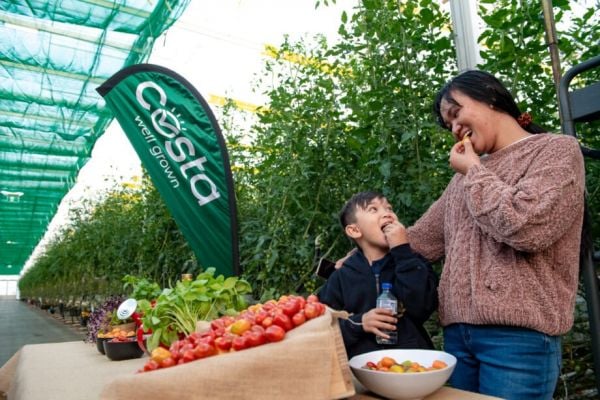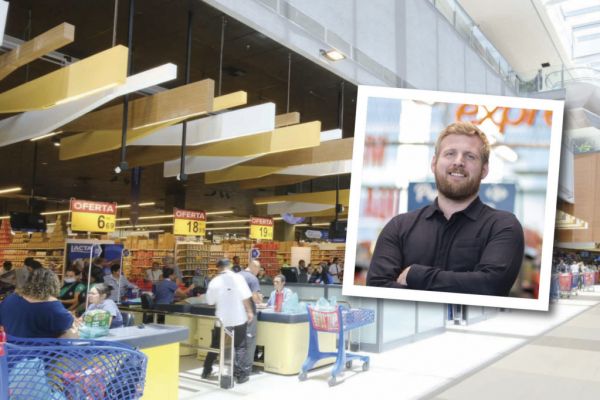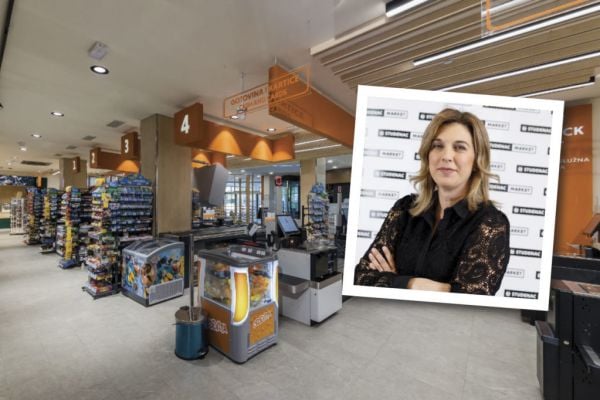If you thought that 2021 was full of surprises, better hold on to your hats during the year ahead, writes Nick Peksa. An abridged version of this article first appeared in ESM Issue 1 2022.
For retailers and consumers, 2021 was a challenging year. Global weather patterns were erratic, resulting in quality issues and reduced harvests, labour shortages affected several tertiary industries, and increases in energy prices affected everyone.
All these issues were further exacerbated by unpredictable demand, as the pandemic receded, global economies snapped back into action, and consumer demand swelled and outstripped the ability of the supply chain to keep pace (effectively, decades of growth were packed into an 18-month period).
The result has been a combination of delivery delays, additional expenses for COVID security, stock shortages, and price hikes.
Food Inflation
Over the past decade, the food industry has been in an extremely comfortable position. It has experienced ‘record harvests’ many times, it has exploited cheap labour, and it has become truly global on the back of a low-margin shipping industry.
This has promoted unhealthy competition in the marketplace, and therefore food has progressively been getting cheaper and cheaper. The bottom was finally reached, and it has taken a global pandemic to reset the marketplace.
The past year saw inflated prices across most raw materials – the price of ocean freight hit astronomic levels, crude oil and gas prices surged, and vegetable oils were elevated, as were metals, sugar, meat and grains. Of course, there were some markets that presented an opportunity: fish, cocoa, and, in some cases, fruit and vegetables. The big question is: what will the raw-material landscape look like in 2022?
Economic Outlook
The OECD predicted that global growth was set to hit 5.6% in 2021, before moderating to 4.5% in 2022 and 3.2% in 2023. Growth in the Eurozone was expected to come in at 5.2% in 2021, decreasing to 4.3% in 2022 and 2.5% in 2023. The first half of this year is expected to be stronger than the second half, given the prospect of additional businesses reopening and restocking.
As GDP growth gradually stabilises, a more normal demand pattern will be experienced for goods and services.
This, supported by the prospective glut of crude oil in early 2022, will help the food industry control ever-increasing food inflation. The industry in general needs to attempt to stem inflation, as an extended period will force major banks to tighten their monetary policies, leading to interest rate hikes and thus slowing down consumer spending and the rate of growth of GDP.
Shipping
One of the main concerns for suppliers in 2022 is to ensure the continued delivery of raw materials, even if this involves paying a higher price. The outlook for shipping is looking better, and spot freight rates could reduce by up to 50%, however, it may take nine months to reach these levels.
These rate reductions will provide some breathing space for importers, however, prices would still be elevated when compared to pre-COVID levels.
This evaluation is based on several factors. Firstly, it is predicted that the demand for physical goods will decrease as consumers focus on purchasing services, rather than goods. This will allow for trade volumes to stabilise and potentially help clear port backlogs.
Secondly, vaccination rates at key export hubs have been picking up. A protected workforce should help prevent any major restrictions affecting carriers and workers. As new capacity comes online, this will, again, help to dampen freight rates. It is expected that this year will see a 2% growth in shipping capacity, expanding to 4% in 2023.
Energy Prices
Energy prices are expected to stabilise, albeit at somewhat higher levels than those seen in early December 2021, when prices dropped, as speculators reacted to the discovery of the Omicron strain of COVID-19.
New production capacity is expected to come online in key regions. This should allow for an easing in both the upward pressure on inflation and downward pressure on economic growth.
Fertiliser Issues
One factor that will not be resolved quickly is that of fertiliser pricing. Unless gas prices decrease dramatically, there will be a limited supply of fertiliser, all sold at a premium rate. Farmers will have some important decisions to make, and each option has a pricing implication.
Raw Material Forecasts
Forward forecasts can be quite generic, however, one factor to consider relates to how markets operate. In general, when a commodity is in limited supply, as many were in 2021, sellers utilise high demand to boost pricing, and prices tend to show upward trajectories. However, in a reducing market, with a high anchor price, there is a tendency for prices to reduce over a longer period.
In 2011, at the time of the last price shock, it took five years for pricing to normalise. The pandemic can be treated slightly differently, however, don’t be surprised if it takes three years for pricing to return to more palatable levels.
EU Milk Products
Assuming normal weather conditions and recovering demand, the dairy industry is expected to grow in 2022. EU milk production could grow at a rate of 0.5%, supported by increasing yields (+1.5%), even with the dairy herd declining at a similar rate to 2021.
Increases in milk should support cheese and butter recovery (+1%), which, in turn, should support consumption (+0.3%) and EU exports (+5%). EU milk powder production is expected to increase (+2%), and, consequently, internal stocks should refill and exports will be boosted (+3%) if strong demand for skim milk powder (SMP) continues from Asia.
Oils And Fats
On the back of elevated crude oil levels, unfavourable weather, reduced crop sizes, and labour shortages in Asia, the entire sector experienced several sharp price increases in 2021. As a result, the price of palm oil increased by 37% in 2021, rapeseed oil rose sharply (+30%), and soybean oil increased by more than 23% in some regions.
High market prices have encouraged farmers to boost their oilseed plantings, and, consequently, world production of vegetable oils is set to increase by eight megatonnes – a four-year high. This increase is primarily supported by the recovery of palm oil, which is predicted to increase by four megatonnes. A price decline is therefore expected, assuming normal weather conditions.
Packaging
The medium-term outlook for plastic is not positive. A global lack of raw materials is placing pressure on end users, and a further price increase of 20% in the first half of the year should not be discounted.
From a supply perspective, the paper industry reacted faster than plastic producers, however, any increases in demand could stimulate shortages. Whilst the market is expected to stabilise, prices may well continue at elevated levels.
Fish And Seafood
Shrimp, salmon, and tuna fish pricing were all quite favourable in the early stages of the pandemic, due to a shutdown of foodservice industries. Since then, shrimp operations have been damaged by labour shortages, disease and flooding, and resulting prices have risen out of their trough.
In 2021, demand for tuna grew by 3%, while increased consumption of canned fish and higher input costs have driven prices up. If catches continue at similar levels, high prices will remain throughout 2022. Lower supplies of salmon and firm demand are expected to drive Chilean salmon prices up at the start of 2022.
The overall situation needs continual monitoring. Given the current volatility of white fish, maybe the industry could consider exploring the further expansion of tilapia usage.
Metals
The market for steel and stainless steel experienced a lot of price pressures in 2021, supported by a sharp jump in economic recovery.
Given that prices in Europe for stainless steel are twice as high as in China, and increased accessibility to steel is expected globally, price reductions of around 25% should be seen in the second half of 2022.
Copper supplies in 2022 are also expected to improve – again, supporting decreasing prices (-12%). Aluminium requires further scrutiny, as the supply-and-demand balance is looking precarious, and the market may experience increases.
Fruit And Vegetables
Fruit pricing is very difficult to predict, due to its weather dependency, however, it is worth noting that due to climate change and recent developments in fruit-breeding programmes, farmers are avoiding planting in high-risk areas.
The industry is seeing growth in acreage for blueberries, grapes and cherries in previously unplanted areas of China, Mexico and Peru. The future could well hold new sourcing opportunities.
Soft Commodities
The market for sugar and coffee in 2022 is uncertain, as the La Niña weather risk continues to build in Brazil. The coffee market has already suffered from drought and frost damage – as to what effect this will have on production is not yet known. Coffee prices are likely to remain elevated until a better forecast of the potential crop is established.
Based on the weather, Brazil is likely to experience a cut in sugar production in 2022. With an increasing sugar deficit, global prices are not expected to fall anytime soon. Cocoa, on the other hand, is looking more positive, as West Africa is expecting an increase in output of more than 10%. Speculators have already taken an interest, and the volume of contracts being purchased has increased. Hopefully prices will remain at favourable rates as interest fades.
Ending Thoughts
When you consider that, in many cases, 60% of a typical product’s cost relates to raw-material prices, 2022 is likely to be a battle for suppliers and retailers alike. Even if the cost of some raw materials decreases, multiple rounds of negotiations may still be required.
Good supply planning will be key to the survival of some suppliers, with demand-forecasting for critical raw materials needing to extend from a 12-month cycle to a 36-month outlook. As food inflation remains strong in 2022, the supply chain needs to continue to innovate. Whether this involves pack resizing, product reformulation, reducing promotions, or something new, suppliers and retailers will benefit from increased collaboration.
Nick Peksa can be contacted at [email protected].
© 2022 European Supermarket Magazine. Article by Nick Peksa. For more Supply Chain news, click here. Click subscribe to sign up to ESM: European Supermarket Magazine.














